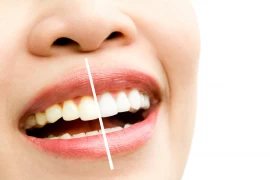
Choosing the Right Toothpaste
- Choosing the Right Toothpaste
- What Is the Main Purpose of Toothpaste?
- Fluoride: A Must-Have?
- For Those with Sensitivity
- Do Whitening Toothpastes Really Work?
- How Safe Are Herbal or Natural Toothpastes?
- Toothpaste Selection for Children
- Other Special Considerations When Choosing Toothpaste
- One Type of Toothpaste Doesn’t Fit All
As a dentist, one of the most frequently asked questions I hear is: "Doctor, which toothpaste should I use?"
Many of my patients feel overwhelmed when faced with hundreds of options on store shelves—whitening, sensitivity relief, herbal, fluoride or fluoride-free... Making a decision can be genuinely challenging.
In this article, I’d like to share the key points of choosing the right toothpaste, based on my professional experience over the years.
What Is the Main Purpose of Toothpaste?
First, let’s clarify something: it is the toothbrush that does the main cleaning, while the toothpaste is a supporting aid. Toothpaste helps prevent plaque formation, freshens breath, and can address specific oral issues.
However, expecting miracles from toothpaste alone is unrealistic. Therefore, the right toothpaste should be chosen not just for cosmetic concerns, but based on your individual oral health needs.
Fluoride: A Must-Have?
Short answer: Yes.
Fluoride strengthens tooth enamel, making it more resistant to acids, and helps prevent cavities. For this reason, I usually recommend toothpastes that contain fluoride. This is especially important for children and individuals prone to cavities.
What matters here is the dosage. For adults, toothpaste containing between 1000–1500 ppm fluoride is usually sufficient. For children, age-appropriate, lower-fluoride products should be used, and for those at risk of swallowing, only a pea-sized or lentil-sized amount should be applied.
Some patients opt for fluoride-free toothpastes. Unless there’s a specific medical condition, these may not provide sufficient protection against cavities. It’s best to make this decision in consultation with your dentist.
For Those with Sensitivity
Tooth sensitivity is a common issue that causes sharp pain or discomfort when consuming hot or cold foods and drinks. In such cases, I recommend toothpastes containing desensitizing ingredients like potassium nitrate or strontium chloride. These ingredients help block the pathways that transmit sensations to the nerves inside the teeth.
If the sensitivity persists, there may be an underlying problem—such as gum recession, cracks, or fractures—that requires professional evaluation.

Do Whitening Toothpastes Really Work?
Whitening toothpastes generally work by using abrasive particles to remove surface stains caused by coffee, tea, or smoking. While they may help brighten teeth by a few shades, the effect is usually limited and can sometimes be abrasive enough to damage enamel.
I advise my patients to use such toothpastes no more than a few times a week, alternating with a gentler option. Products with high abrasiveness (high RDA value) may lead to long-term sensitivity.
If you’re looking for real and safe whitening, professional treatments in a clinical setting are the most effective and controlled approach.
How Safe Are Herbal or Natural Toothpastes?
In recent years, many patients have shown a preference for “natural” or “herbal” toothpastes. These may contain ingredients like mint, sage, or tea tree oil. However, a major drawback is that many of them lack adequate fluoride, reducing their effectiveness in preventing cavities.
Moreover, not all herbal ingredients are harmless. Some may cause irritation or allergic reactions in the oral tissues. Therefore, it’s important to read ingredient labels carefully and opt for certified, dermatologically tested products whenever possible.
Toothpaste Selection for Children
When choosing a toothpaste for children, both the content and the flavor—as well as the fluoride level—are important. Most child-friendly toothpastes use safe sweeteners like xylitol, and sugary toothpastes should always be avoided.
Fluoride concentration should be appropriate for the child’s age. Packaging typically includes this information:
- Ages 0–3: ~500 ppm fluoride
- Ages 3–6: up to 1000 ppm
Appealing packaging and flavors help encourage regular brushing habits in children. But remember: children under age 6 should always brush under adult supervision.
Other Special Considerations When Choosing Toothpaste
- For those who suffer from canker sores or mouth ulcers, choose a toothpaste that is SLS-free (Sodium Lauryl Sulfate), as SLS can cause irritation despite creating foam.
- Individuals prone to tartar build-up may benefit from toothpastes containing sodium pyrophosphate or zinc citrate.
- Those experiencing bad breath may find better results with formulations containing zinc or chlorhexidine.
One Type of Toothpaste Doesn’t Fit All
Every mouth is different. That’s why I don’t recommend the same toothpaste to everyone. The right choice depends on your oral health condition, gum status, cavity risk, level of sensitivity, and your expectations.
As a dentist, I always make individualized recommendations after assessing each patient. If you’re unsure which toothpaste to use, consult your dentist to find the most suitable option for you.
Oral health is the silent guardian of your quality of life. A daily care routine supported with the right products is the most effective way to prevent tooth loss and other issues in the future.
A healthy smile begins with the right toothpaste.

Dr. Çağla Özbay
Dentist




